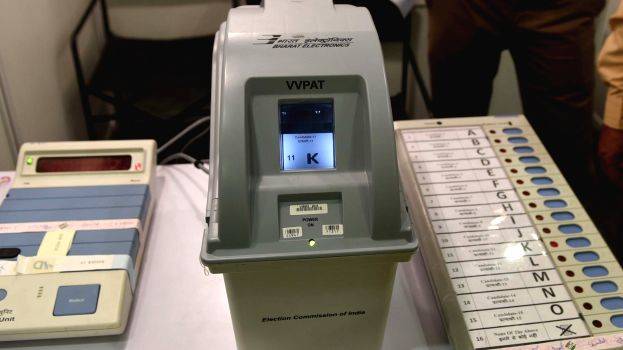

THIRUVANANTHAPURAM: The starling but strange claim made by so called hacker Saed Shuja in London that BJP came to power in 2014 by tampering with the Electronic Voting Machines (EVMs) took political circles by storm and created anxiety in the minds of voters.
India has been using EVMs for the past four decades. Though some of the political parties had questioned the credibility of the machines, all these parties at the end accepted the result from the machines. The election commission has stood firm by the preciseness of EVMs, rebutted allegations and challenged those who made allegations to prove that EVMs can be hacked.
But nobody came forward to take up that challenge. Moreover, experts had hailed India to be the country that perfected the voting machine technology much ahead of America.
The EVMs were first used in 1982 in the by-election to North Paravur Assembly Constituency in Kerala for 50 polling stations. After that it was used in several elections partially. It was in 2000 that Election Commission decided to use only EVMs for elections.
During 2006, 2010 and 2013 the machines were technically improved. Voter verifiable paper audit trail (VVPAT) or verifiable paper record (VPR) was also introduced. It is a method of providing feedback to voters using a ballotless voting system. A VVPAT is intended as an independent verification system for voting machines designed to allow voters to verify that their vote was cast correctly, to detect possible election fraud or malfunction, and to provide a means to audit the stored electronic results. It contains the name of the candidate (for whom vote has been cast) and symbol of the party/individual candidate. In the coming election EVMS with this facility will be used.
The presentation documents of the election commission clarifies the security features of the machines at all its stages of functionality.
Why EVMs can't be hacked?
1) Hackers cannot tamper with Indian EVMs. Our EVMs are secure and cannot be hacked (among many other reasons) because they are not connected to the internet.
2) The BBC report that an American had hacked Indian Electronic Voting Machines (EVMs) is a false story. The American opened an EVM, changed some parts, and hacked the new parts he had put in the machine. He did not hack the original Indian machine. (For anyone to access hundreds of thousands of EVMs in India, break the seals and replace parts on a mass scale needed for rigging elections is impossible as all the machines are guarded by troops and by representatives of all political parties as well).
3) Isn't it possible to simply programme the EVM at the manufacturing stage to record all votes (or a high proportion of votes) for one candidate - e.g. the candidate on Button One. So is it possible that even if 100 voters press Buttons 2, 3, 4 or 5, 50 votes for candidates against each of the other buttons gets transferred to the candidate listed against Button One?
This is simply meaningless. A key issue preventing the transfer of votes from one button to another is that nobody knows what order the candidates or parties will be listed on the EVM till after the last date of withdrawing nomination papers. That means the order of buttons is known for about two weeks - far too little time to manipulate the buttons. Furthers, specific EVMs are assigned to constituencies in a randomized matter pretty late in the day, and in the presence of representatives of all parties. So if you think your party will be Button One - and somehow (goodness knows how), you get the votes of other buttons transferred to Button One, the Election Commission could end up listing another candidate against Button One and you would be helping your competitor.
4) In fact, ballot paper-based voting is subject to much more fiddling and manipulation. In the days of ballot papers, a party used to capture polling booths and stamp all the ballot papers in their favour. The estimated amount of false voting using ballot papers was 5, which, in a state like UP, is a huge 3.5 million false votes. Accompanied by all the threats and violence associated with booth capturing, there is no question: voting by ballot papers is subject to much more "hacking" and manipulation than EVMs.
5) The technology, the design and the thought process behind India's EVMs are admired across the world. Many election experts have visited and tested our EVMs. We should be proud of India's EVMs instead of falsely using them as a scapegoat when a party loses an election.
Finally - the Election Commission has devised EVMs with a paper trail. Manufacturing has begun. This in our opinion is not a necessary step - it merely is needed to assuage the suspicious minds of an older generation who are not used to the new Digital India and the digital world. Watch this video to understand the new EVMs with a paper trail.
When you press the button for your party, the party name and symbol is printed and the paper is visible through a window in the machine. The paper then falls into a sealed cabinet at the bottom of the machine. This cabinet collects all the printed papers and is only opened when the counting process begins. And printouts could be used in case of disputes.